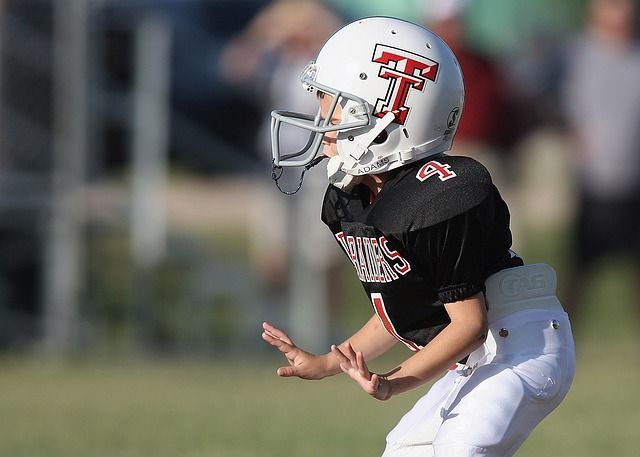Changes In Human White Brain Matter Seen After One Season Of Youth Football

Even the lightest head hits may affect youth football players, suggests a new study published in Radiology.
Researchers recruited 25 children between the ages of 8 and 13 who had played in a youth football league during the 2012 or 2013 season. The children were outfitted with helmets that, along with video recording, tracked the amount and severity of head impacts they received over the course of a season. Before and after the season, they also underwent neuroimaging exams that measured minute changes in their brain’s white matter. The researchers ultimately found that children who experienced head impacts were more likely to display these subtler changes, despite none being serious enough to cause a concussion.
"Most investigators believe that concussions are bad for the brain, but what about the hundreds of head impacts during a season of football that don't lead to a clinically diagnosed concussion?” said lead author Dr. Christopher T. Whitlow, an associate professor and chief of neuroradiology at North Carolina's Wake Forest School of Medicine, in a statement. “We wanted to see if cumulative sub-concussive head impacts have any effects on the developing brain."
Specifically, Whitlow and his colleagues measured the level of fractional anisotropy (FA) along different areas of the brain using an advanced MRI technique called diffusion tensor imaging. FA is used to determine the level of connectivity in a brain region. While different parts of the brain have different levels of connectivity, a high FA is considered healthy in places like the frontal lobe. Hit children, however, experienced slight decreases in FA compared to before they started the season. These changes also stacked up the more hits they received, and resembled those seen in children who have had mild concussions, otherwise called traumatic brain injuries (TBI).
"We found that these young players who experienced more cumulative head impact exposure had more changes in brain white matter, specifically decreased FA, in specific parts of the brain," Whitlow said in the statement. "These decreases in FA caught our attention, because similar changes in FA have been reported in the setting of mild TBI.”
While the team’s findings support other research showing that even mild head trauma can have longer health impacts, Whitlow notes that much more study is needed. In particular, determining whether these changes can or will amount to any lasting harm.
"We do not know if there are important functional changes related to these findings, or if these effects will be associated with any negative long-term outcomes," Whitlow said. "Football is a physical sport, and players may have many physical changes after a season of play that completely resolve. These changes in the brain may also simply resolve with little consequence.“
He added: “However, more research is needed to understand the meaning of these changes to the long-term health of our youngest athletes."
Source: Bahrami N, Sharma D, Rosenthal S, et al. Subconcussive Head Impact Exposure and White Matter Tract Changes over a Single Season of Youth Football. Radiology. 2016



























